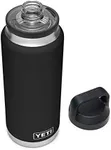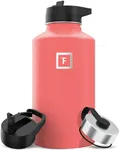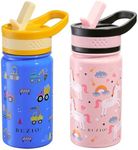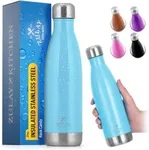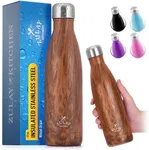Buying Guide for the Best Thermos Vacuum Flask
Choosing the right thermos or vacuum flask can make a big difference in keeping your beverages at the desired temperature for extended periods. Whether you need it for hot coffee during a long commute, cold water during a hike, or soup for lunch, understanding the key specifications will help you select the best product for your needs. Here are the main factors to consider when picking a thermos or vacuum flask.CapacityCapacity refers to the amount of liquid the thermos can hold, usually measured in milliliters (ml) or ounces (oz). This is important because it determines how much beverage you can carry with you. Smaller capacities (up to 500 ml or 16 oz) are ideal for personal use, such as a single serving of coffee or tea. Medium capacities (500-1000 ml or 16-34 oz) are suitable for longer outings or sharing with one or two people. Larger capacities (over 1000 ml or 34 oz) are great for group activities or when you need to carry a significant amount of liquid. Choose a capacity based on how much you typically drink and how long you need the beverage to last.
Insulation PerformanceInsulation performance indicates how well the thermos can maintain the temperature of its contents, whether hot or cold. This is usually measured in hours. High-performance flasks can keep beverages hot or cold for up to 24 hours, while standard ones may only maintain temperature for 6-12 hours. If you need your drink to stay hot or cold for an entire day, opt for a high-performance flask. For shorter durations, a standard flask will suffice. Consider your daily routine and how long you need the temperature to be maintained when making your choice.
MaterialThe material of the thermos affects its durability, weight, and insulation properties. Common materials include stainless steel, plastic, and glass. Stainless steel is the most popular choice due to its durability, excellent insulation, and resistance to rust and stains. Plastic flasks are lighter and often more affordable but may not offer the same level of insulation or durability. Glass flasks provide a clean taste and are easy to clean but are more fragile. Choose a material based on your priorities, such as durability for outdoor activities or a clean taste for beverages.
Lid TypeThe lid type affects the ease of use and how well the thermos prevents leaks. Common lid types include screw-on, flip-top, and push-button. Screw-on lids are very secure and provide excellent leak protection, making them ideal for travel. Flip-top lids are convenient for quick access but may not be as leak-proof. Push-button lids offer one-handed operation, which is great for multitasking but can be prone to wear over time. Consider how you plan to use the thermos and choose a lid type that offers the right balance of convenience and security.
Size and WeightSize and weight are important for portability and ease of use. A larger, heavier thermos may offer better insulation and capacity but can be cumbersome to carry, especially for long periods. A smaller, lighter thermos is easier to transport but may not keep beverages hot or cold as long. Think about how you will be carrying the thermos—whether in a backpack, handbag, or by hand—and choose a size and weight that you can comfortably manage.
Ease of CleaningEase of cleaning is crucial for maintaining hygiene and the longevity of your thermos. Some thermoses have wide mouths that make them easier to clean, while others may have narrow openings that require special brushes. Dishwasher-safe models offer convenience but may not be as durable over time. Consider how much effort you are willing to put into cleaning and whether you prefer hand-washing or using a dishwasher. A thermos that is easy to clean will be more enjoyable to use and maintain.
